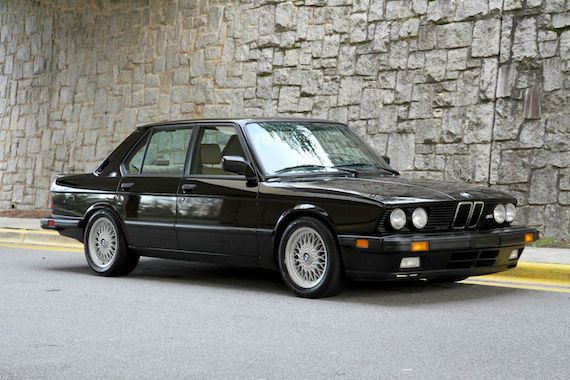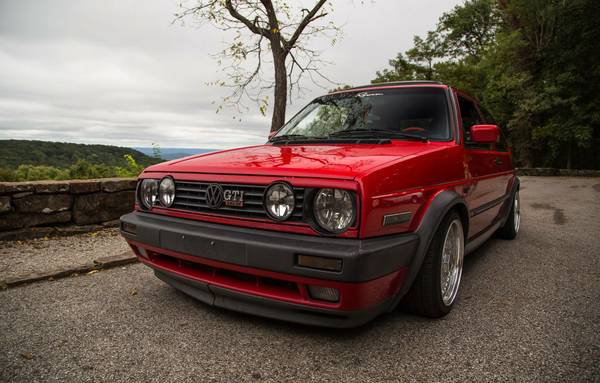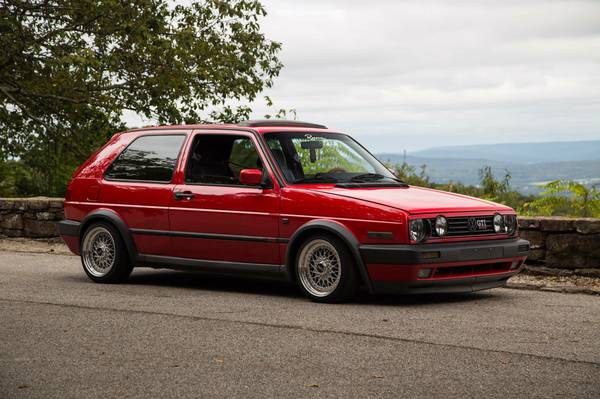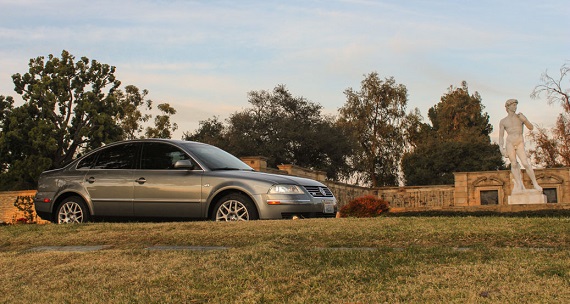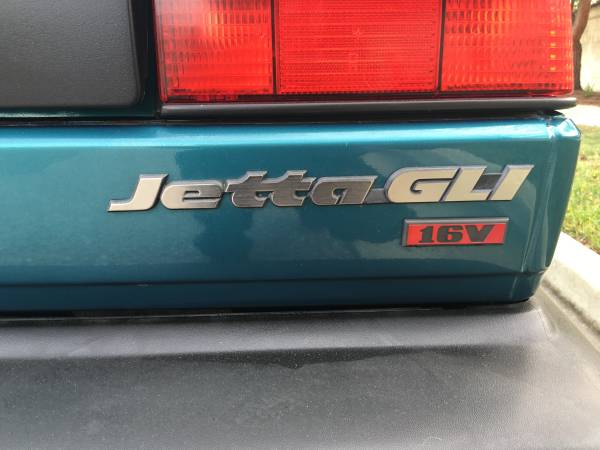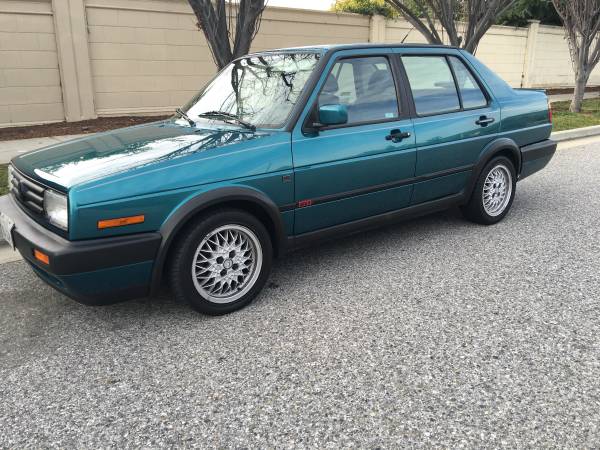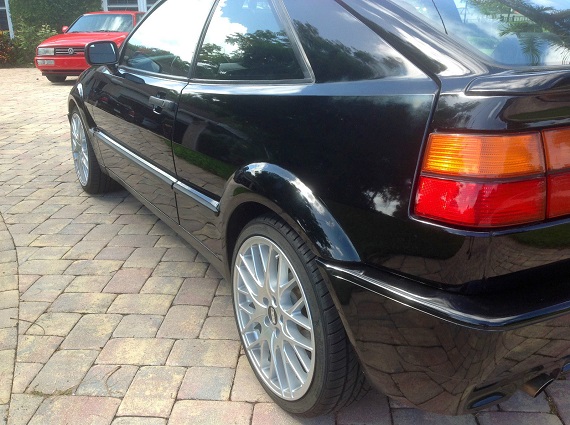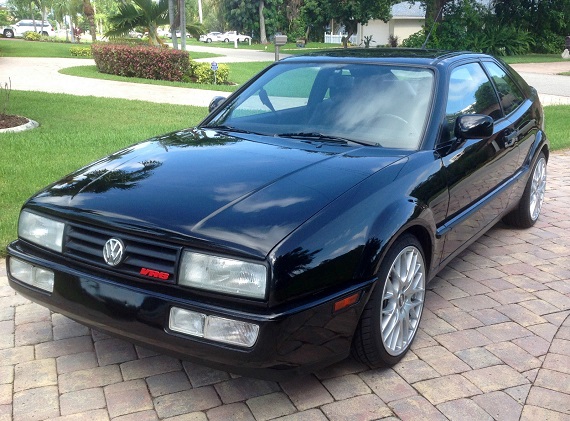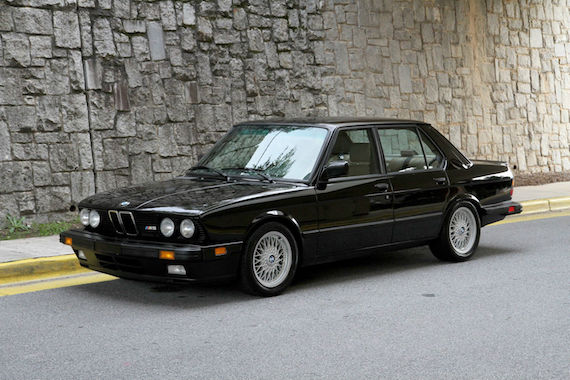
When I first saw this car, I thought I’d be writing a “Revisit” article due to the grey brick background and beautiful E28 M5. Alas, it’s just another very clean M5 from Motorcar Studio, nearly a dead ringer for the one I featured just over a year ago. That 138k-mile example’s auction ended without a buyer at the $32,900 asking price, so they’re coming in a little lower at $27.9k for this 194k-mile M5. It actually looks to be in as good or better shape despite the higher mileage, especially in the interior where the apparently-original leather looks as good as a redo. Mechanically, all records from new with diligent maintenance from just two owners is about as good as it gets with a high-mileage classic. S38s have been known to reach well over a quarter-million miles without a rebuild given devoted maintenance and a little luck, and with a compression test showing 200 PSI all around, this looks like a good candidate.
Tag: BBS
There’s something that’s just so right about the 1990-1992 GTis. The bigger bumpers gave a chunkier, more menacing look than the 85-89 cars had, and the swap to the 4-headlight grill worked so well. More power and bigger, better BBS wheels made these the best GTis in the eyes of many VW faithful. By 1990, the GTi 16V had gotten fairly expensive so Volkswagen reintroduced a more budget-conscious 1.8 8 valve version. It wasn’t a total poseur, though – Volkswagen made an attempt to differentiate the entry level GTi from the standard Golf. With 105 horsepower on tap (5 more than the standard Golf) and a 5-speed close-ratio gearbox, they channeled a bit of the original A1 GTi even if they didn’t sing up high like the 16Vs did. There were other subtle differences between the 16V and 8V; externally, they looked very similar except that the 16Vs wore appropriate 16V insignia front and rear and on the slimmed down side moldings. The 16Vs also got the larger and wider BBS RM multi-piece wheels with wider flares, while the 8V model wore the 14″ “Teardrop” alloys that had previously been the signature of the 16V. Both now wore roof mounted antenna and integrated, color coded rear spoiler with 3rd brake lights and color coded mirrors, along with the aforementioned 4-headlight grill, deeper rocker panels and integrated foglights. The 16V got beefier Recaro Trophy seats, while the 8V was equipped with the standard sport seats. Both wore the same sport suspension. And, both models now had the passive restraint “running mouse” belts. Today we’ve got one of each to look at, so let’s start with the big brother:
CLICK FOR DETAILS: 1991 Volkswagen GTi 16V on Huntsville Craigslist
1 CommentFollowing up on the 2.0 16V GTi from earlier, the car that perhaps draws wider appeal as the best 1990s Volkswagen product – and, in part, the argument against paying a lot for a late Mk.2 GTi – is the Corrado VR6. As I talked about in the 1990 Corrado write up from the other day, the G60 was a bit down on power and finicky, leaving the GTi as the more desirable choice until 1992 for many. But in 1992, Volkswagen changed the game by introducing the narrow-angle VR6 motor into the sport coupe. Compared to the European-spec model, North American cars were detuned; Europeans enjoyed a 2.9 liter mill with nearly 190 horsepower, while North America made due with about ten less from a 2.8 variant. Subtle upgrades to the exterior made the Corrado look a bit more finished and upscale to match its pricetag. Performance was also where it should have been from the get-go, and the result was the package that many consider one of the best front-drivers ever made:
